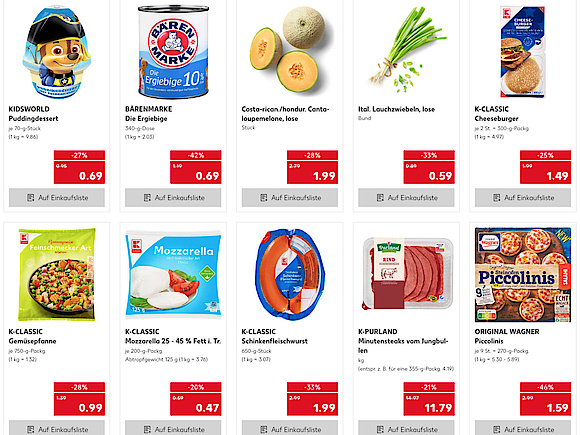
Amazon & The State of E-Commerce Demand
Autor
Jay Cornforth

Blogbeitrag
Amazon & The State of E-Commerce Demand
The digital transformation of global economies and supply chains are driving positive economic demand in the logistics sector, especially in top tier markets where there is a convergence of logistics infrastructure and population. These gateway markets are expected to outpace markets where one-day delivery is less prevalent. An estimated 70% of the new value created in the economy over the next decade will be based on digitally enabled platform business models.7
During 2020-2022, e-commerce penetration accelerated sales by an average CAGR of 19.6%, and U.S. E-commerce sales are forecast to grow at an 18% CAGR over the next five years, adding approximately $900 billion in e-commerce sales.8
In this current market environment, Amazon’s ability to expedite one-day delivery represents a competitive advantage and is critical to maintaining market share. As a result, Amazon nearly doubled its warehouse footprint in the US to 700M SF between 2020 and 2021.1 Shortly after this expansion, however, Amazon decided to sublease up to 10%1 of their newly leased space, which raised questions on the state of e-commerce demand. When the world’s largest online retailer reduces its warehouse footprint, investors become wary to the possibility of severe changes in the market.
During COVID-19 and in a rush to fill demand, Amazon leased more space than required to prevent delays and maintain their market share amid record setting ecommerce growth. Amazon leased 300M SF in 2020 and 2021, and they were over capacity on 15% of the 300M SF.5 Amazon also reported a $3.8B loss in Q1 2022 while accounting for 40% of the e-commerce market.3,4 Amazon’s decision to sublease up to 10% of the newly leased space reflects the company’s desire to prioritize improved profit margins over aggressive expansion.3 After analyzing Amazon’s rationale for subleasing, it is clear that e-commerce demand not only remains strong, but also continues to grow, especially in the sought-after infill markets.
So, what does this mean for the market as a whole? Even after Amazon’s cooling, Net Absorption in Q1 2022 (98.2M SF) was up from that in Q1 2021 (92.5M SF).5 The additional 30M SF from Amazon equated to 0.2% of the total US industrial inventory at 17.8B SF,5 which still exhibited a record low vacancy rate of 3.1% as of Q1 2022.2 Gross national leasing activity year-to-date through April was up by 7% from the same period in 2021 and rental rates were up 16% year-over-year in Q1 2022.2
Analyzing the industrial markets shows that Amazon is still increasing their footprint. On their home turf, Seattle, Amazon increased their footprint by 6M SF and represented 9.8% of total market absorption from 2020-2021; concurrently, Amazon accounted for 8.0% of overall market absorption in Los Angles and 5.0% in the Inland Empire. We continue to see YTD growth in total market absorption in other target infill markets: 7.1% in Dallas, 6.8% in Austin, and 5.9% in Houston. In an effort to provide one-hour-deliveries in NYC boroughs, Amazon’s leasing activity comprised 50% of total leasing activity since 2018. Similarly, Amazon doubled their exiting footprint in New Jersey in 2021, and YTD they make up roughly 20% of all leasing activity. In the south-east region of the US, Amazon is expected to sublease 6-8M SF, and we are expecting to see significant lease reductions and subleases around Atlanta and Southern Florida.5
Overall, the market fundamentals for logistics not only remain strong, but also facilitate continued growth in e-commerce, which is expected to accelerate in top tier markets where there is a convergence of infrastructure and population, and these global gateway markets are expected continue to outpace that of secondary and tertiary markets where same- and next-day delivery is less prevalent.
Sources
1 Green Street Industrial Insights – May 27,2022
2 CBRE Thriving U.S. Industrial Market Well Positioned to Withstand Economic Headwinds as of May 2022.
3 Green Street Industrial Insights – May 27,2022.
4 Prologis, E-Commerce Market Share Will Climb Higher, May 2022
5 CoStar US Industrial Data as of June 2022
6 JLL Research as of June 2022.
7 World Economic Forum, Shaping the Future of Digital Economy and New Value Creation
8 JLL, Industrial real estate demand on the rise in the U.S., Summer 2020
US real estate
USA Conference
All speakers at the conference are experts for investing in US real estate. They share their insights and forecasts through a series of focused presentations, culminating in a closing panel which discusses opportunities and strategies for investing in the US this year and beyond.
weitere Informationen
Werden Sie FondsNews-Leser!
Fachartikel, Informationen und Nachrichten der institutionellen Immobilienwirtschaft.



